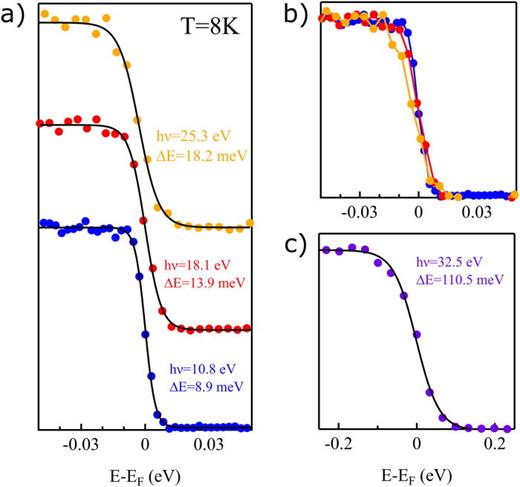Experimental developments
A narrow bandwidth extreme ultra-violet light source for time- and angle-resolved photoemission spectroscopy
Here, we present a high repetition rate, narrow bandwidth, extreme ultraviolet photon source for time- and angle-resolved photoemission spectroscopy. The narrow bandwidth pulses 9, 14 and 18 meV for photon energies 10.8, 18.1 and 25.3 eV are generated through high harmonic generation using ultra-violet drive pulses with relatively long pulse lengths (461 fs). The high harmonic generation setup employs an annular drive beam in tight focusing geometry at a repetition rate of 250 kHz. Photon energy selection is provided by a series of selectable multilayer bandpass mirrors and thin film filters, thus avoiding any time broadening introduced by single grating monochromators. A two stage optical-parametric amplifier provides < 100 fs tunable pump pulses from 0.65 μm to 9 μm. The narrow bandwidth performance of the light source is demonstrated through angle-resolved photoemission measurements on a series of quantum materials, including high-temperature superconductor Bi-2212, WSe2, and graphene.
Schematic overview of the BALTAZAR systems

Energy resolution for various photon energies

Time resolution determine by pump-probe spectroscopy on Graphene

Struct. Dyn. 9, 024304 (2022)
https://doi.org/10.1063/4.0000149